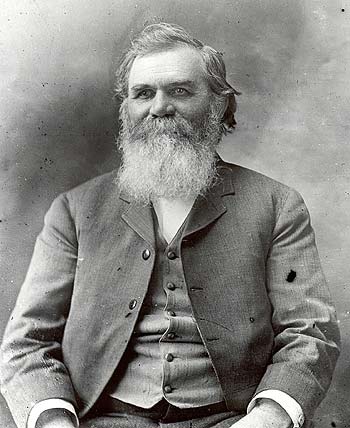
Is it your impression of Chiropractic care that it’s a new development or a fad? Certainly not, Chiropractic has a long history! Is it an ancient science? Not quite. Chiropractic was born about one and a quarter century ago, in Iowa in the United States.
The growth of Chiropractic care has been steady, as it spread and was studied more both inside and outside the US, gaining official status and being recognized for it’s legitimacy as a physical science. You might find the history of Chiropractic interesting:
A Chiropractic History Timeline
1896: In Iowa, Dr. Daniel David Palmer administers two adjustments to the spine of a janitor, Mr. Harvey Lillard, in an effort to improve his hearing (it works). Reverend Samuel Weed suggests creating a new word from Greek origin for the new discipline. D.D. Palmer devises the term “chiropractic,” meaning done by hand and begins practice as a “chiropractor.” D.D. Palmer gets a corporate charter for the Palmer School of Magnetic Cure, which later opens as The Palmer School of Chiropractic.
1897: The Palmer School of Chiropractic opens, where Dr D. D. Palmer begins teaching chiropractic. Leroy Baker is his first chiropractic student.
1906: The Universal Chiropractors’ Association (UCA) is created to provide legal protection to chiropractors charged with practising medicine without a license. The UCA later expands its work to include educational and political involvement.
1907: Shegetaro Morikubo, DC, a 1906 graduate of the Palmer School of Chiropractic, is the first known chiropractor to be acquitted of unlicensed practice. This case establishes legal precedence for future trials.
1910: D.D. Palmer releases his most popular book: The Chiropractor’s Adjuster: The Science, Art & Philosophy of Chiropractic.
1913: Kansas becomes the first U.S. state to recognize and license the practice of chiropractic. Kansas passes the first chiropractic statute; although formation of a Board of Chiropractic Examiners is delayed because the governor refuses to appoint members of the board on the grounds that all chiropractors had practiced illegally prior to passage of the statute. D.D. Palmer, founder of chiropractic, passes away at his home in Los Angeles. He dies from typhoid fever, but son B.J. Palmer, will be accused of his murder.
1918-1922: World War I winds down and the U.S. government distributes tuition to returning veterans; chiropractic college enrollments boom; the Palmer School of Chiropractic has 3,000 enrolled students.
1922: The American Chiropractic Association (ACA) is first organized in opposition to Dr. B.J. Palmer and the Universal Chiropractors’ Association.
1923: Alberta becomes the first province to license chiropractic practice in Canada.
1924: B.J. Palmer, DC, officially introduces the neuro-calometer.
1925: Wisconsin and Connecticut pass the first basic science statutes; these laws will eventually spread to 24 American states and a few Canadian provinces.
1926: B.J. Palmer, DC, is not re-elected as secretary of the Universal Chiropractors’ Association, and one week later he establishes the Chiropractic Health Bureau, later renamed the International Chiropractors Association (ICA).
1926: The International Congress of Chiropractic Examining Boards is founded in Kansas City.
1930: The National Chiropractic Association (NCA) is organized by amalgamation of the UCA and the ACA.
1931: Chittenden Turner authors The Rise of Chiropractic, an early history of the profession.
1933: Warren L. Sausser, DC, of New York City introduces the upright, 14-inch x 36-inch, full-spine X-ray to further Logan Basic Technique. The U.S. Council of State Chiropractic Examining Boards is established with a mandate to provide unified standards for licensure.
1934: The International Congress of Chiropractic Examining Boards is reorganized as the Council of State Chiropractic Examining Boards.
1936: The U.S. National Board of Chiropractic Examiners (NBCE) is established to promote consistency and reciprocity between state examining boards.
1939: The Canton of Zurich, Switzerland, becomes the first jurisdiction outside North America to license the practice of chiropractic.
1940: The Allied Chiropractic Educational Institutions (ACEI), which includes the Carver, Cleveland, Eastern, O’Neil-Ross, Palmer, Ratledge and Texas Colleges, issue an ultimatum to the National Chiropractic Association and its Committee on Education. The ACEI insists that instruction in physiotherapeutics and the lengthening of the chiropractic curriculum must cease.
1941: The NCA publishes the first edition of Chiropractic Education: Outline of a Standard Course, authored by former COSCEB president John J. Nugent, DC, who is newly appointed as NCA’s director of education.
1944: The Foundation for Chiropractic Education and Research (FCER) is established by the leadership of the National Chiropractic Association and becomes the profession’s foremost agency for funding of postgraduate scholarship and research.
1945: World War II ends and returning veterans enjoy the educational benefits of the G.I. Bill; chiropractic college enrollments skyrocket. The National Chiropractic Insurance Company (today’s NCMIC Group, Inc.) is chartered by the board of directors of the National Chiropractic Association;
1946: The National Chiropractic Association receives authorization to sell malpractice insurance from the Iowa Commissioner of Insurance.
1970: The Council of State Chiropractic Examining Boards is renamed the Federation of Chiropractic Licensing Boards.
1974: The U.S. Council on Chiropractic Education (CCE) is recognized by the federal government as the accrediting agency for schools of chiropractic. This leads to the development of affiliated agencies in Australasia, Canada, Europe and most recently Latin America. Louisiana is the last U.S. state to recognize and license the practice of chiropractic. The U.S. Council of State Chiropractic Examining Boards is renamed the Federation of Chiropractic Licensing Boards (FCLB).
1979: Chiropractic in New Zealand, the report of the NZ Commission of Inquiry into Chiropractic, is published. This is the first government commission to adopt a full judicial procedure, hearing evidence on oath and subject to cross-examination when examining patients, chiropractors, medical doctors and others on the role of the chiropractic profession. The Commission’s recommendations strongly endorse chiropractic services and call for medical cooperation. The report has a major international impact.
1987: Final judgment is reached in the Wilk vs American Medical Association case, opening the way for much greater cooperation between medical and chiropractic doctors in education, research and practice in the U.S. and, as a result, internationally.
1988: World Federation of Chiropractic (WFC) is formed.
1992: Newfoundland is the last province to license chiropractic practice in Canada.
1993: The Manga Report in Canada, the first government-commissioned report by health economists looking at the cost-effectiveness of chiropractic services, recommends a primary role for chiropractors with back pain patients on grounds of safety, cost-effectiveness and patient preference, and concludes this will save hundreds of millions annually in direct health care costs and work disability payments.
1994: Government-sponsored expert panels developing evidence-based guidelines for the management of patients with back pain in the U.S. (Agency for Health Care Policy and Research) and the U.K. (Clinical Standards Advisory Group) provide the first authoritative reports that manipulation is a proven and preferred treatment approach for most acute low-back pain patients.
1996: U.S. government begins official funding support for an ongoing agenda for chiropractic research through the National Institutes of Health.
1997: The WFC, whose members are national associations of chiropractors in over 85 countries, is admitted into official relations with the World Health Organization (WHO) as a non-governmental organization or NGO.
1998: The first year in which there were more chiropractic schools outside the United States than in the United States.
2002: The US Congress introduces chiropractic Services in the military health system.
2004: The US Congress introduces chiropractic Services throughout the veterans’ administration healthcare system.
2005: WHO publishes the WHO Guidelines on Basic Training and Safety in Chiropractic, recommending educational standards for the recognition and regulation of chiropractic services in all member countries.
2007: There are 23 recognized chiropractic schools outside the United States, most recently schools in Japan, Malaysia and Spain.
2009: The WHO Guidelines on Basic Training and Safety in Chiropractic are now printed in Arabic, Chinese, English, Finnish, French, German, Indonesian, Japanese, Korean, Portuguese, Spanish and Turkish.
If you would think chiropractic services may help you or a loved one, call Concierge Chiropractic today to arrange an appointment in the comfort of your home.






